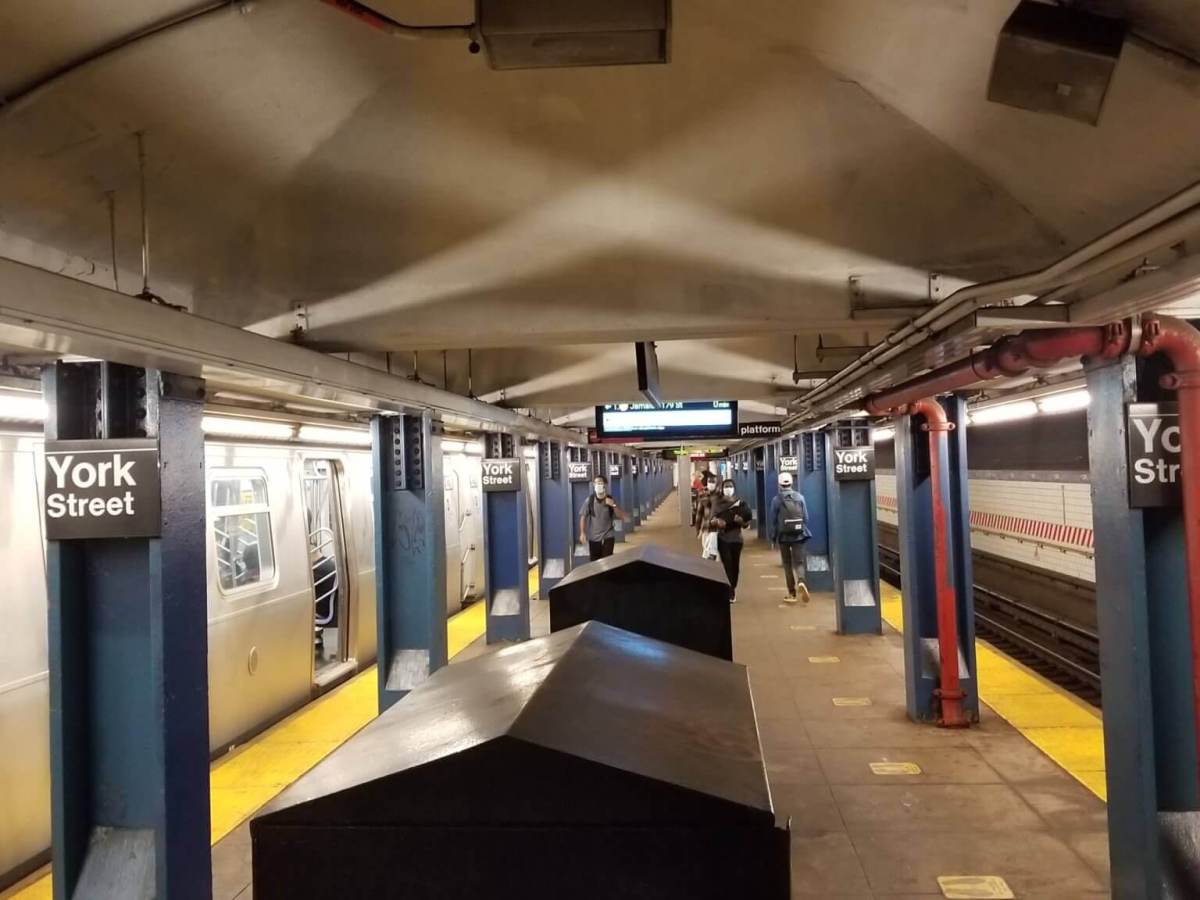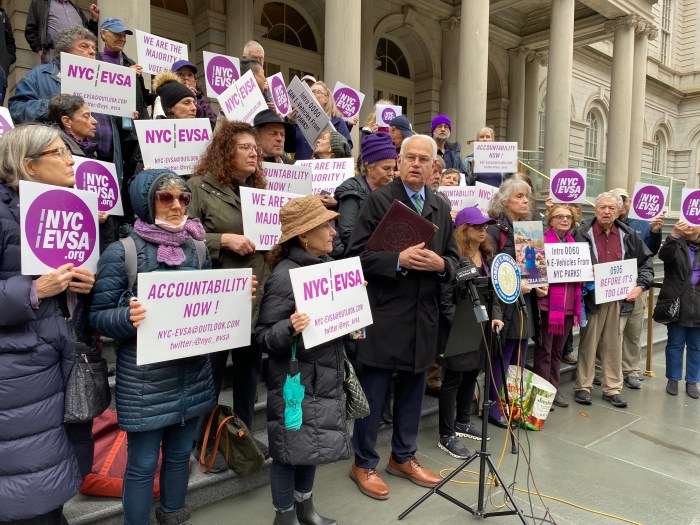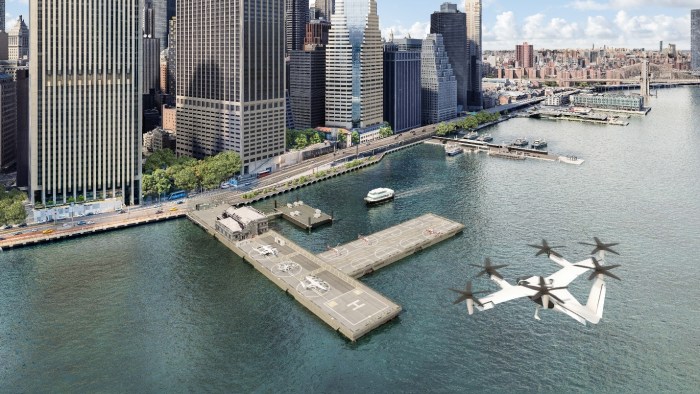Subway stations located nearest to New York City’s waterways tend to have the most hazardous air quality, according to a new study from New York University’s Grossman School of Medicine.
In a study of air quality at 55 subway and PATH stations in Manhattan, Brooklyn, Queens, and New Jersey, researchers found a statistically significant positive relationship between a station’s proximity to a river and its levels of harmful fine particulate matter (PM2.5) in its air.
PM2.5 — microscopic particles less than 2.5 microns in diameter, about 30 times smaller than the width of a human hair — form in the air from burning fossil fuels and are linked to all manner of health issues, including asthma, lung cancer, and heart disease, according to the state Department of Health.
“Our findings help explain why some underground subway stations are more polluted than others,” said David Luglio, an NYU doctoral student and the study’s lead author. “Those subway stations closest to rivers clearly must be prioritized during cleaning efforts.”
The station with the highest level of particulate matter in its air was 7th Avenue on the B/Q line in Brooklyn, with a concerning 317.2 parts-per-million of PM2.5. That station, the Q’s third stop in Brooklyn, was an outlier in the top 10: eight of the top ten stations for PM2.5 concentration were the first stops on their line after coming out of an underwater tunnel.
In Brooklyn, those included High Street on the A/C, York Street on the F, and Borough Hall on the 4/5, all in Downtown Brooklyn. In Manhattan, they include Bowling Green on the 4/5, Fulton Street on the A/C, Lexington Avenue-59th Street on the R, Lexington Avenue-53rd Street on the E, and Christopher Street on the PATH. The air in all those stations, each the first stop out of the river on their lines, contains more than 200 ppm of PM2.5.
Overall, air quality in stations closest to rivers was found to have 80-130% higher average concentrations of PM2.5 than even those stations two or three stops away from bodies of water. Potential confounding variables like depth — of particular interest here given stations closest to the water tend to be deeper than average — were found to have no correlation with air quality. The only other factor observed to correlate with air quality was a station’s age, though that relationship was not statistically significant.

Appropriately, the NYU researchers suggest the phenomenon is due to something called the “river-tunnel effect.” Most underground segments of the subway system have some form of ventilation allowing for air exchange between the surface world and the tunnel.
But that’s not possible underwater, meaning harmful particulate matter like iron and carbon are entrapped in the air and build up over time. More particulate matter gets released as trains criss-cross the river and cause the substances to move throughout the tunnel and into stations, the researchers say.
The researchers also tested their hypothesis against lines that stop underground on both sides but cross the river via bridge, rather than tunnel. In fact, the hypothesis was flipped on its head for the B line, which crosses the East River via the Manhattan Bridge: stations further away from the river had worse air quality than those nearby.
Substantial disparities were recorded in air quality among the stations, which had samples collected in February and March of 2022. 7th Avenue had a PM2.5 concentration nearly 50 times higher than the lowest-ranked station overall, the Journal Square PATH station in Jersey City, and more than 30 times the levels seen in the lowest-ranked subway station, Bergen Street on the F in Boerum Hill.
Nonetheless, as has been found in previous research, the average particulate concentration throughout the system is substantially in excess of what scientists deem hazardous to human health. 50 of the 55 stations observed had particulate concentrations higher than 35 ppm, which the Environmental Protection Agency deems the limit of daily exposure before it can cause adverse health effects.
The NYU researchers, whose future plans involve studying the effect of the contaminants on human cell health, argue that the findings should spur transit honchos to work improving tunnel ventilation and aggressively cleaning tunnel walls and floors, intent on removing debris to prevent its cycling through the air.
“Now that our results have identified key contributors to poor air quality in New York City’s underground subway stations, we have a better idea of where to improve conditions in the most contaminated areas of the transit system,” said Terry Gordon, another study author and a professor of medicine at NYU. “Increasing ventilation and scrubbing the tunnel walls and floors to remove continually recycling debris may make stations safer for riders and transit workers.”
Reached for comment, a spokesperson for the Metropolitan Transportation Authority took umbrage with the study’s methodology.
“This study tested a hypothesis by only taking samples for short periods, at the most active time of day, which is not an accurate comparison to EPA standards for daily exposure limits,” said the spokesperson, Michael Cortez. “We have conducted previous air quality testing in the subway system and found no health risks, however, we will thoroughly review this study as the safety of customers and employees is always our highest priority.”
This story has been updated with comment from the MTA





































